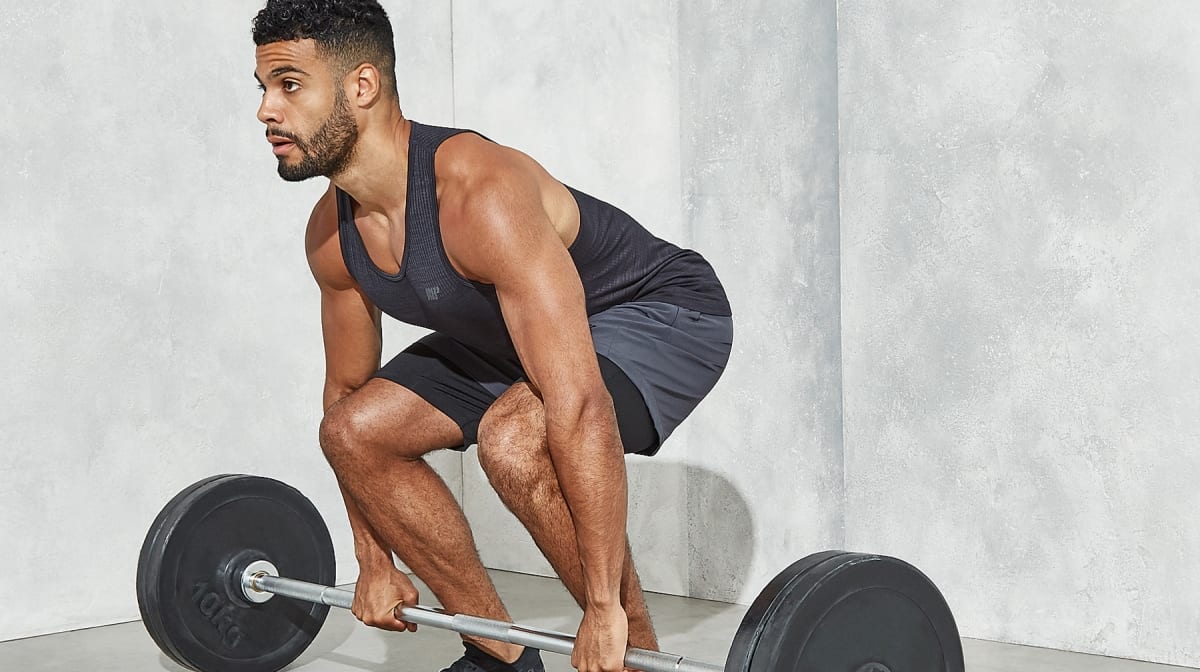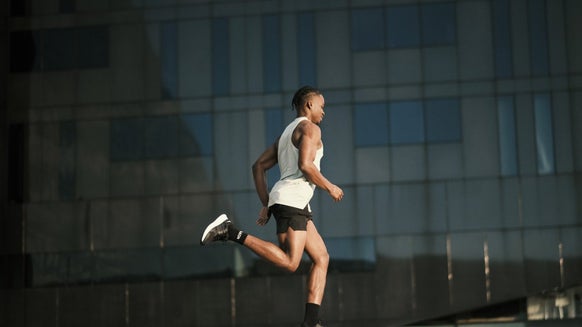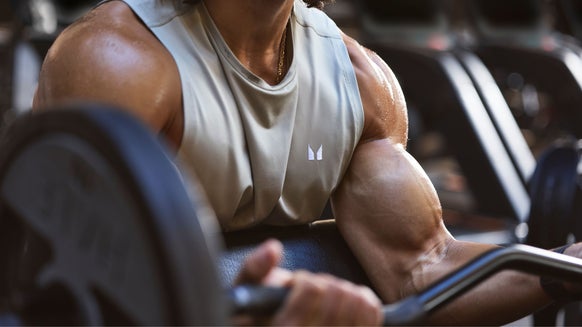10 Deadlift Mistakes That Are Giving You Back Pain

The deadlift is known as the king of all exercises within the gym. It builds whole-body strength and the posterior chain (muscles on the back of the body) which are often neglected or underdeveloped.
But, they can go wrong. How many times have you, after a set of deadlifts, put your hands in your lower back and lean back? Let out a groan or a sigh? This isn’t normal.
Deadlifts place significant stress on your back. Your lower back will be fatigued from deadlifting, but so should your hamstrings, glutes, lats and spinal erectors. If it's solely your lower back aching, then this article is for you.
Take a look through these top tips on how to freshen up and improve your deadlift form.
1) Lifting too heavy
This is one of the biggest factors that can cause back pain. Having a weight that is too heavy will result in your body not being able to hold itself in the position needed to lift safely.
It's so easy to want to pile on the weight and look super-strong in front of others. But, you’ll look silly when you lift the weight with bad form and put your back out.
Start with a weight you can comfortably do 7 reps with, and do 5 reps. Repeat this 5 times, so 5 sets of 5 reps. Then next week, add 1.25kg to each side of the bar. And repeat. This is incremental overload and will allow you to challenge your body in a sensible way. If you start to get pain again, take 5kg off, and spend a few weeks at the lower weight, nailing that form.
2) Yanking the bar off of the floor
You hype yourself up, music blasting, you grab the bar, huff and puff and then… PULL! Whilst this may help you get ready for the lift, it can cause your form to go out the window.
Take your position, brace your core and push with your legs. The bar will move smoothly off of the floor, and you will maintain your positioning.
3) Distance from bar
Just like before, you hype yourself up, grab the bar, straighten your legs, and squat down towards the starting position. But, doing this means your shins knock the bar forward. When the bar moves forward, this puts the weight further away from your centre of mass — making the lift even harder.
To demonstrate this, try side raising a 10kg DB with a straight arm. Now bend your elbow to 90’ degrees and raise your elbow up. You'll notice it’s much easier. Weights closer to our own centre of mass are easier to lift.
4) Breathing properly to brace your core
When you breathe into your chest, you're missing out on creating internal pressure and diaphragm control that supports the spine. Breathing properly is one of the best ways to brace your core and an important part of setting up the deadlift correctly.
Try this tip to practise breathing using your diaphragm. Use your index finger and push into your stomach, quite deep, but not too far that it hurts. Now take a deep breath and try to push out against your finger. At the end of your breath, brace your abs. This is diaphragmatic control. It'll help create internal pressure that supports the spine and helps to reduce the spine flexing during lifting.
5) Uneven grip width
When you grip the bar, make sure you line up your palms evenly on each side of your legs. You can use the bar's knurling as a guide to ensure your hands are an even distance apart.
Having an uneven grip can load one side of your body, making the lift more difficult, which in turn can cause back pain. If you're using an over‐under style grip, make sure your hands are directly below your shoulders.
6) Not being mobile enough
If your back is rounded during a deadlift, and resembles something of a scared cat, no matter what hand or foot position you try, you may need to work on your thoracic spine mobility. Your thoracic spine is the section of you back that roughly goes from your shoulders to your mid‐lower back.
If your back muscles like your lats, rhomboids and spinal erectors aren’t mobile enough to get your back flat at the start of the lift, then the weight will be put onto your lower back which can cause pain and injury.
7) Rushing your set
There are two main styles of deadlifting, touch and go and a dead stop.
Touch and go deadlifting is where you perform the deadlift, and on the way back down touch the weights to the floor and pull again, without stopping. This can be useful in providing constant tension to the muscles but can make people rush the set and forget important technique cues of the lift.
Stopping dead between reps allows you to reset your position and pull from an optimal position each time. Not only does this allow for a safer lift, but can help you maximise each and every lift.
8) Performing the wrong deadlift for your body type
If you’re struggling with deadlifting or experiencing pain in your back, there’s a chance you're doing the wrong variation for your body type.
So, which type of deadlift should you be doing?
Barbell deadlift
The barbell deadlift is one of the most popular exercises in the gym. For most people barbell deadlifting can be performed safely and pain-free but will require you to master the correct technique.
https://youtu.be/NkejG6dKInw
Hex-bar deadlift
If you're tall and experiencing back pain with tradition deadlifts, then Hex bar deadlifts could be for you.
Using a hex bar enables you to keep your arms at your sides, so the weight is closer to your centre of gravity — with less stress on your back.
https://youtu.be/3O6jAeEvELU
Sumo deadlift
If you’re performing the conventional deadlift and experiencing back pain, it might be time to try the sumo deadlift. Having shorter legs can make your deadlift starting position look more like the start of a clean and jerk.
Sumo deadlifts are ideal for a people with arms longer than their legs, as you don't need to bend your knees as much to reach the bar.
Try widening your stance and bringing your grip to the inside of your thighs, this can help you set your hips in a stronger starting position, by utilising more of your posterior chain muscles, like your hamstrings and glutes.
9) Adding rack pulls into your workout to help your deadlift
Some people add heavy rack pulls into their workout to help top half of their deadlift. Nine out of ten reasons for failing a deadlift at the top isn’t strength related, it's technique.
You have used all of your leg drive and no other movement other than from the lower back. However, adding in heavy rack pulls, with the same technique failings, are simply reinforcing bad habits.
10) Not deadlifting frequently enough to reinforce your form
Just like squats, most deadlift gains come from being more efficient at the movement and technique, not just getting stronger. Only deadlifting once per week, for 2‐4 sets is not going to train your body on how to perform the deadlift. Remember, practice makes perfect.
Take Home Message
The deadlift can be a scary lift, with all the warnings of back pain and injury, however utilising our guide will help create a safer exercise for you to use, to make gains in muscle mass and strength.
The key is form over function, make sure your technique is correct, safe and consistent, and your body will thank you for it.








